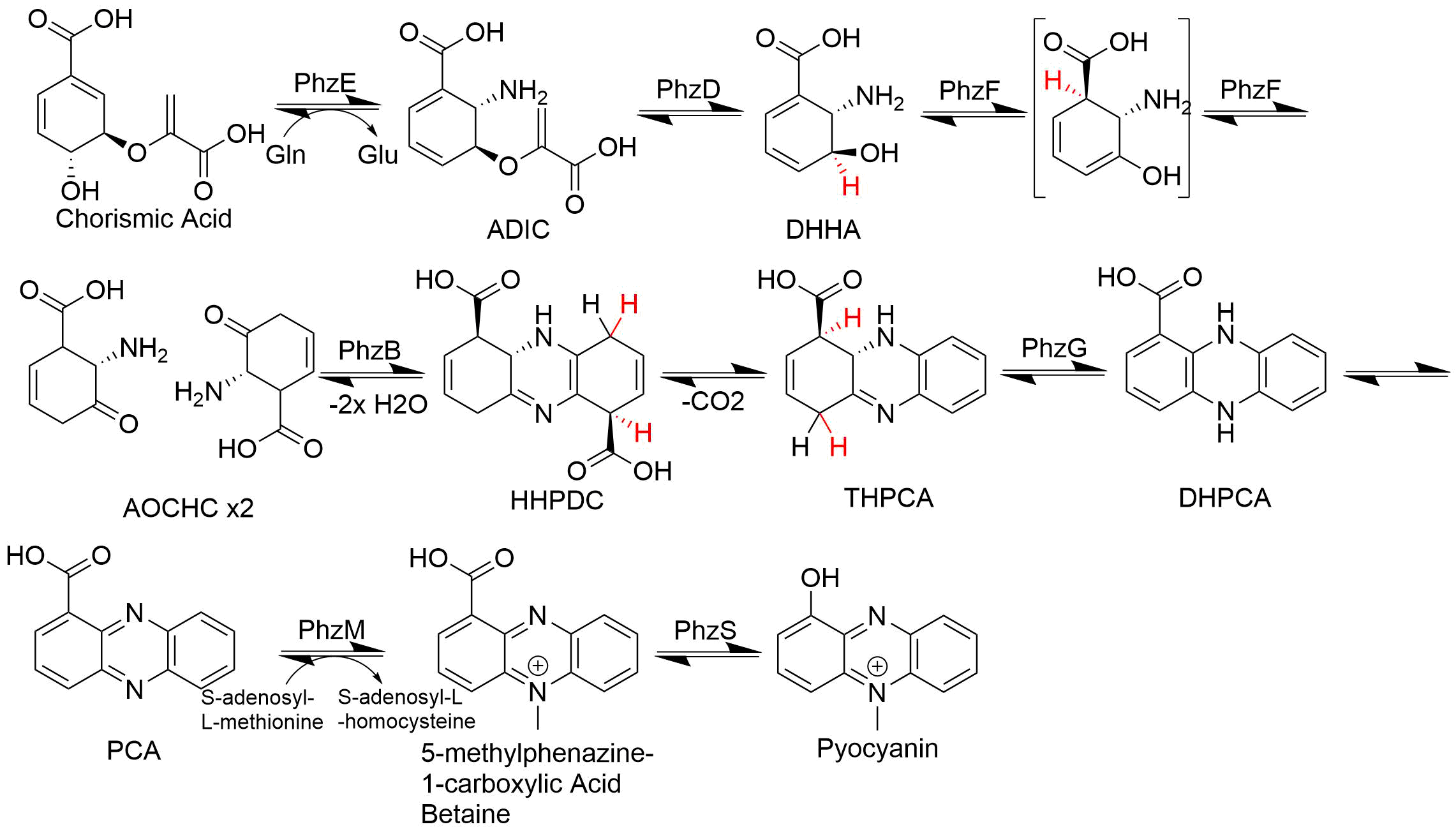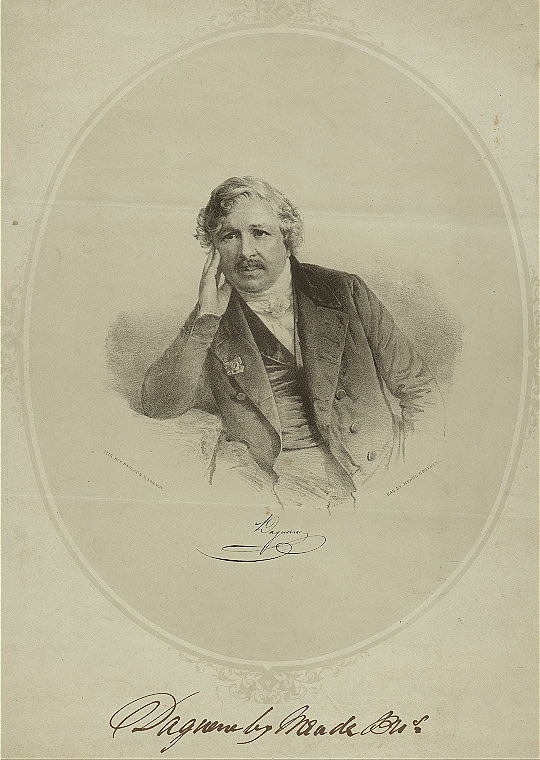|
Mathurin-Joseph Fordos
Mathurin-Joseph Fordos (3 November 1816 – 1 July 1878) was a French pharmaceutical chemist who was the first to examine what he named as pyocyanin, the blue pigment in pus produced by ''Pseudomonas aeruginosa''. This was the first natural phenazine to be described. He also collaborated with Louis Daguerre and is thought to have been involved in producing one of the first photographs in 1837 of the Pont Neuf The Pont Neuf (, "New Bridge") is the oldest standing bridge across the river Seine in Paris, France. It stands by the western (downstream) point of the Île de la Cité, the island in the middle of the river that was, between 250 and 225 BC, ... in Paris. Biography Fordos was born in Serent and studied pharmacy at Paris where he worked in hospitals thereafter. He met and began to collaborate with Amédée Gélis, another pharmacy intern, and together they established a society for pharmaceutical science and began to conduct research. Their first work was on inorganic ... [...More Info...] [...Related Items...] OR: [Wikipedia] [Google] [Baidu] |
Pyocyanin
Pyocyanin (PCN−) is one of the many toxic compounds produced and secreted by the Gram negative bacterium ''Pseudomonas aeruginosa''. Pyocyanin is a blue secondary metabolite, turning red below pH 4.9, with the ability to oxidise and reduce other molecules and therefore kill microbes competing against ''P. aeruginosa'' as well as mammalian cells of the lungs which ''P. aeruginosa'' has infected during cystic fibrosis. Since pyocyanin is a zwitterion at blood pH, it is easily able to cross the cell membrane. There are three different states in which pyocyanin can exist: oxidized (blue), monovalently reduced (colourless) or divalently reduced (red). Mitochondria play an important role in the cycling of pyocyanin between its redox states. Due to its redox-active properties, pyocyanin generates reactive oxygen species. Biosynthesis Pyocyanin biosynthesis begins with the synthesis of the phenazine-1-carboxylic acid (PCA) core. In this reaction the enzyme PhzE catalyzes the loss of t ... [...More Info...] [...Related Items...] OR: [Wikipedia] [Google] [Baidu] |
Pseudomonas Aeruginosa
''Pseudomonas aeruginosa'' is a common encapsulated, gram-negative, aerobic–facultatively anaerobic, rod-shaped bacterium that can cause disease in plants and animals, including humans. A species of considerable medical importance, ''P. aeruginosa'' is a multidrug resistant pathogen recognized for its ubiquity, its intrinsically advanced antibiotic resistance mechanisms, and its association with serious illnesses – hospital-acquired infections such as ventilator-associated pneumonia and various sepsis syndromes. The organism is considered opportunistic insofar as serious infection often occurs during existing diseases or conditions – most notably cystic fibrosis and traumatic burns. It generally affects the immunocompromised but can also infect the immunocompetent as in hot tub folliculitis. Treatment of ''P. aeruginosa'' infections can be difficult due to its natural resistance to antibiotics. When more advanced antibiotic drug regimens are needed adverse effects may re ... [...More Info...] [...Related Items...] OR: [Wikipedia] [Google] [Baidu] |
Phenazine
Phenazine is an organic compound with the formula (C6H4)2N2. It is a dibenzo annulation, annulated pyrazine, and the parent substance of many dyestuffs, such as the toluylene red, indulines, and safranines (and the closely related eurhodines). Phenazine crystallizes in yellow needles, which are only sparingly soluble in ethanol, alcohol. Sulfuric acid dissolves it, forming a deep-red solution. Synthesis Classically phenazine are prepared by the reaction of nitrobenzene and aniline in the Wohl-Aue reaction. Other methods include: * pyrolysis of the barium salt (chemistry), salt of azobenzoate * oxidation of aniline with lead oxide * oxidation of dihydrophenazine, which is prepared by heating pyrocatechin with o-phenylenediamine. * oxidation of ortho-aminodiphenylamine with lead peroxide. Derivatives * The more complex phenazines, such as the naphthophenazines, naphthazines, and naphthotolazines, may be prepared by condensing Toluidine, ortho-diamines with quinone, ortho-quinones or ... [...More Info...] [...Related Items...] OR: [Wikipedia] [Google] [Baidu] |
Louis Daguerre
Louis-Jacques-Mandé Daguerre ( , ; 18 November 1787 – 10 July 1851) was a French artist and photographer, recognized for his invention of the eponymous daguerreotype process of photography. He became known as one of the fathers of photography. Though he is most famous for his contributions to photography, he was also an accomplished painter, scenic designer, and a developer of the diorama theatre. Biography Louis Daguerre was born in Cormeilles-en-Parisis, Val-d'Oise, France. He was apprenticed in architecture, theatre design, and panoramic painting to Pierre Prévost, the first French panorama painter. Exceedingly adept at his skill of theatrical illusion, he became a celebrated designer for the theatre, and later came to invent the diorama, which opened in Paris in July 1822. In 1829, Daguerre partnered with Nicéphore Niépce, an inventor who had produced the world's first heliograph in 1822 and the oldest surviving camera photograph in 1826 or 1827. Niépce die ... [...More Info...] [...Related Items...] OR: [Wikipedia] [Google] [Baidu] |
Pont Neuf
The Pont Neuf (, "New Bridge") is the oldest standing bridge across the river Seine in Paris, France. It stands by the western (downstream) point of the Île de la Cité, the island in the middle of the river that was, between 250 and 225 BC, the birthplace of Paris, then known as Lutetia and, during the medieval period, the heart of the city. The bridge is composed of two separate spans, one of five arches joining the left bank to the ''Île de la Cité'', another of seven joining the island to the right bank. Old engraved maps of Paris show that the newly built bridge just grazed the downstream tip of the ''Île de la Cité''; since then, the natural sandbar building of a mid-river island, aided by stone-faced embankments called ''quais'', has extended the island. Today the tip of the island is the location of the ''Square du Vert-Galant'', a small public park named in honour of Henry IV, nicknamed the "Green Gallant". The name ''Pont Neuf'' was given to distinguish it fr ... [...More Info...] [...Related Items...] OR: [Wikipedia] [Google] [Baidu] |
Sérent
Sérent () is a commune in the Morbihan department of Brittany in north-western France. Inhabitants of Sérent are called in French ''Sérentais''. Geography Sérent belongs to the natural region of Les Landes de Lanvaux, a forest covered area. Historically it belongs to Vannetais Vannes (; br, Gwened) is a commune in the Morbihan department in Brittany in north-western France. It was founded over 2,000 years ago. History Celtic Era The name ''Vannes'' comes from the Veneti, a seafaring Celtic people who live .... Map See also * Communes of the Morbihan department References External links Official website * Mayors of Morbihan Association Communes of Morbihan {{Morbihan-geo-stub ... [...More Info...] [...Related Items...] OR: [Wikipedia] [Google] [Baidu] |
Sodium Aurothiosulfate
Sodium aurothiosulfate, or sanocrysin, is the inorganic compound with the formula . This salt contains an anionic coordination complex of gold(I) bound to two thiosulfate ligands. It is colorless. History The compound was first synthesized in 1845 by Mathurin-Joseph Fordos and A. Gélis who were researching chemicals used in the Daguerrotype photographic process. It then came to be called Fordos and Gélis salt. It went out of interest until 1924 when it was noted as a chemotherapeutic agent for tuberculosis by Holger Møllgaard in Copenhagen. Other methods of synthesis were then identified. Potential applications Like several other gold compounds, this species is used as an antirheumatic. The first placebo-controlled trial was probably conducted in 1931, when sanocrysin was compared with distilled water for the treatment of tuberculosis. Aurothiosulfate complexes have been discussed in the context of the extraction of gold from its ores. The general approach would employ sodiu ... [...More Info...] [...Related Items...] OR: [Wikipedia] [Google] [Baidu] |
Carle Gessard
Carle or Carlé is a surname. Notable people with the name include: *Andrea Cosima Carle, whose stage name is Maggie Mae (1960 – 2021), German singer * Barbara Carle (born 1958), French-American poet, critic, translator and Italianist *David Carle (born 1989), American ice hockey coach *Derek Carle (born 1973), Zimbabwean cricketer * Eric Carle (1929–2021), American designer, illustrator, and writer of children's books *Erwin Carlé, know by the pseudonym Erwin Rosen (1876 - 1923), German author and journalist * Frankie Carle (1903–2001), American pianist and bandleader *Jerry Carle (1923–2014), American football, basketball, and baseball player and coach *Gabrielle Carle (born 1998), Canadian soccer forward * Gilles Carle (1928–2009), French Canadian director, screenwriter and painter * Glenn Carle, American writer and former intelligence officer *Jean Carle (born 1962), Canadian former civil servant, business executive, and Liberal Party operative * Jean-Claude Carle (1 ... [...More Info...] [...Related Items...] OR: [Wikipedia] [Google] [Baidu] |
1816 Births
This year was known as the ''Year Without a Summer'', because of low temperatures in the Northern Hemisphere, possibly the result of the Mount Tambora volcanic eruption in Indonesia in 1815, causing severe global cooling, catastrophic in some locations. Events January–March * December 25 1815–January 6 – Tsar Alexander I of Russia signs an order, expelling the Jesuits from St. Petersburg and Moscow. * January 9 – Sir Humphry Davy's Davy lamp is first tested underground as a coal mining safety lamp, at Hebburn Colliery in northeast England. * January 17 – Fire nearly destroys the city of St. John's, Newfoundland. * February 10 – Friedrich Karl Ludwig, Duke of Schleswig-Holstein-Sonderburg-Beck, dies and is succeeded by Friedrich Wilhelm, his son and founder of the House of Glücksburg. * February 20 – Gioachino Rossini's opera buffa ''The Barber of Seville'' premières at the Teatro Argentina in Rome. * March 1 – The Gork ... [...More Info...] [...Related Items...] OR: [Wikipedia] [Google] [Baidu] |
1878 Deaths
Events January–March * January 5 – Russo-Turkish War – Battle of Shipka Pass IV: Russian and Bulgarian forces defeat the Ottoman Empire. * January 9 – Umberto I becomes King of Italy. * January 17 – Battle of Philippopolis: Russian troops defeat the Turks. * January 23 – Benjamin Disraeli orders the British fleet to the Dardanelles. * January 24 – Russian revolutionary Vera Zasulich shoots at Fyodor Trepov, Governor of Saint Petersburg. * January 28 – ''The Yale News'' becomes the first daily college newspaper in the United States. * January 31 – Turkey agrees to an armistice at Adrianople. * February 2 – Greece declares war on the Ottoman Empire. * February 7 – Pope Pius IX dies, after a 31½ year reign (the longest definitely confirmed). * February 8 – The British fleet enters Turkish waters, and anchors off Istanbul; Russia threatens to occupy Istanbul, but does not carry out the threat. * Feb ... [...More Info...] [...Related Items...] OR: [Wikipedia] [Google] [Baidu] |





